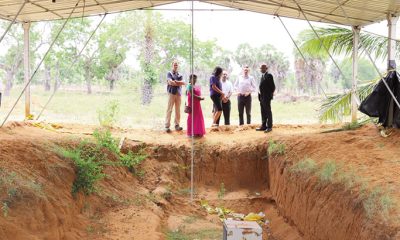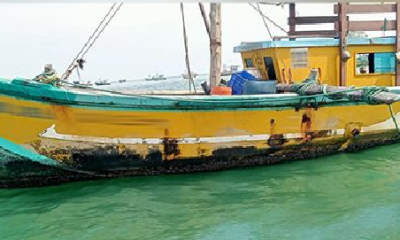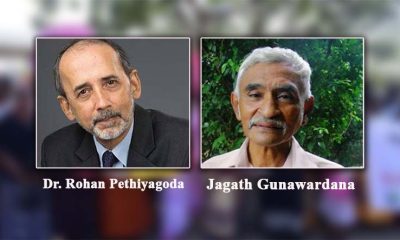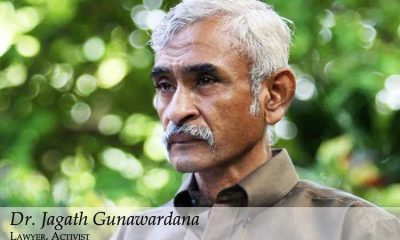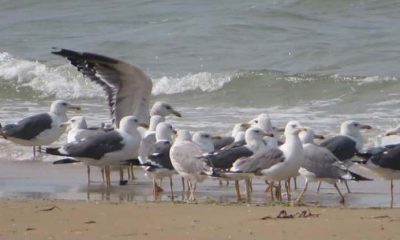News
Professor spells doom for Mannar migratory birds from Adani windfarm
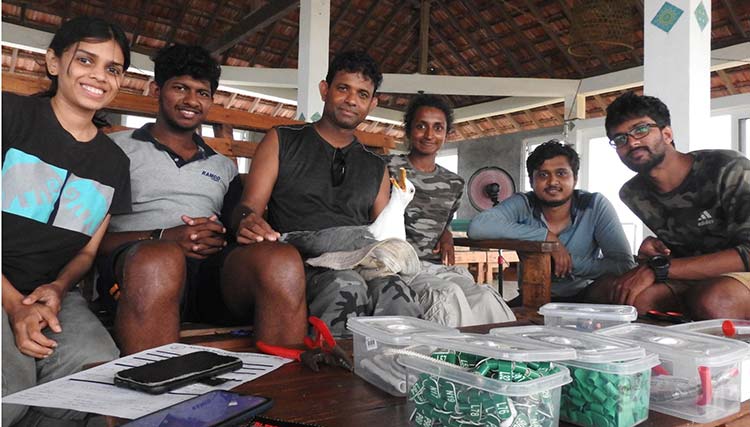
By Rathindra Kuruwita
Approximately 15 million birds migrate to Sri Lanka from 30 countries every year, Prof. Sampath S. Seneviratne, of the Department of Zoology and Environment Sciences – University of Colombo says.
One of the primary entry points for these migratory birds was the Mannar islands, he said, expressing concern over the proposed Adani wind farm, which could lead to disastrous consequences for birds.
Prof. Seneviratne said each tower was 120 metres tall. Additionally, the rotor blades measure 96 metres in length.
“Windmills have no emissions, and they don’t make a lot of noise. However, whether these windmills are eco-friendly and would benefit the economy depends on a number of factors that lie outside the technology used,” he said.
Prof. Seneviratne mentioned that the proposed construction site was on the migratory path of birds. Over the past four years, the University of Colombo has conducted extensive research on bird migration routes using satellite imagery, as well as GMS and GPS technology. These data serve not only environmental interests but also aid the Civil Aviation Authority, Air Force, BIA, and other flight-operating agencies.
“Through our research, we’ve gained insight into Sri Lanka’s position within the migratory routes of birds. For instance, certain birds in Pesalai, Mannar, lay eggs in Europe, spending six months there before migrating to Sri Lanka for the other half of the year. This round trip spans approximately 25,000 kilometers. Additionally, some birds lay eggs in the Arctic during the brief period when the snow begins to melt, then journey to Sri Lanka with their offspring. Annually, approximately 15 million birds migrate to Sri Lanka from 30 different countries,” Prof. Seneviratne said.
According to Prof. Seneviratne, birds follow eight primary migratory routes, one of which is known as the Central Asian Highway. During September and October, when the northern regions of the world experience cold temperatures, approximately four billion birds use this route to migrate southwards. They then return to the north during March and April.
“Sri Lanka lies at the southernmost end of the Central Asian Highway, with Antarctica located approximately 12,000 kilometres further south. Through signed agreements, we have committed to safeguarding the well-being of these migrating birds while they are within our borders,” he said.
“There are three main routes birds take to enter Sri Lanka. One lies between Colombo and Chilaw, the second one is through Mannar and the third route lies through Jaffna,” Prof. Seneviratne said.
“Among the three primary routes, the majority of birds migrate through the Mannar and Jaffna pathways. Birds entering Sri Lanka via Jaffna typically originate from regions such as China and Russia. The Mannar route is favoured by birds from the Arctic and those migrating through the Indus Valley. Birds tend to avoid flying long distances over water due to the lack of emergency landing areas, preferring to stick to land masses whenever possible. Consequently, the safest passage for birds migrating to Sri Lanka is through what is known as Adam’s Bridge. As a result, millions of birds annually enter Sri Lanka via the Mannar route,” he said.
Prof. Seneviratne highlighted that from an environmental science perspective, several areas in Sri Lanka hold significant importance. Among them, Mannar stands out due to its crucial role in facilitating the migratory path of birds.
“We are going to establish 52 windmills that have 96-metre rotor blades that rotate at about 100 km per hour in the path of these birds,” he said.
Prof. Seneviratne pointed out that many individuals in developing nations often underestimate the impact of environmental issues on their lives. He noted that recent innovations have made wind power a cost-effective solution. In Mannar, there is already an existing windmill farm named Thambapavani, managed by the CEB. The proposed windmill farm is set to be established by Adani Green Energy Sri Lanka.
“Adani intends to utilise all the lands situated between Adams Bridge Marine National Park and Vankalai Ramsar Wetland for its power project. The cost-effectiveness of wind power is evident, with the average unit of electricity generated by wind power amounting to approximately two cents USD. However, we are expected to purchase a unit at about 9.7 cents USD, which is five times the global rate. Consequently, we will be entering into an agreement with Adani to procure electricity for five years at this significantly higher rate, with payments made in US dollars,” he said.
Prof. Seneviratne said the environment of Mannar, livelihoods of people there and the lives of animals would be severely affected by the Adani wind power project.
Prof. Seneviratne called for greater scrutiny and consideration of its environmental and social impacts. The Environmental Impact Assessment (EIA) report for the Adani wind power project had been released he said, questioning the integrity of the study, which he said, may have been more of a formality than a comprehensive analysis of the project’s implications.
“The regulatory body for renewable energy projects in Sri Lanka is the Sustainable Energy Authority (SEA) and the Environmental Impact Assessment report shows us that it is the SEA, which is the proponent for the Adani project. They are also involved in taking over the land from private individuals. This is problematic like many other aspects of the project. We have agreed to purchase a terawatt of electricity annually from the wind farm at five times the international market rate. We are destroying our environment and the livelihoods of many people. So, what is the benefit we are getting from this ‘green’ project?” he asked.
News
US sports envoys to Lanka to champion youth development

The U.S. Embassy in Colombo welcomed the U.S. Sports Envoys to Sri Lanka, former National Basketball Association (NBA) and Women’s National Basketball Association (WNBA) players Stephen Howard and Astou Ndiaye, from June 8 through 14.
The Public Diplomacy section of the U.S. Embassy said that it would launch a weeklong basketball program intended to harness the unifying power of sports, made possible through collaboration with Foundation of Goodness and IImpact Hoop Lab.
While in Sri Lanka, Howard and Ndiaye, both retired professional basketball players, will conduct a weeklong program, Hoops for Hope: Bridging Borders through Basketball. The Sports Envoys will lead basketball clinics and exhibition matches and engage in leadership sessions in Colombo and Southern Province for youth aged 14-18 from Northern, Uva, Eastern and Western Provinces, offering skills and leadership training both on and off the court. The U.S. Envoys will also share their expertise with the Sri Lanka Basketball Federation, national coaches, and players, furthering the development of basketball in the country. Beyond the clinics, they will collaborate with Sri Lankan schoolchildren to take part in a community service project in the Colombo area.
“We are so proud to welcome Stephen and Astou as our Sports Envoys to Sri Lanka, to build on the strong people-to-people connections between the United States and Sri Lanka,” said U.S. Ambassador Julie Chung. “The lessons that will be shared by our Sports Envoys – communication, teamwork, resilience, inclusion, and conflict resolution – are essential for leadership development, community building, equality, and peace. The U.S. Sports Envoy program is a testament to our belief that sports can be a powerful tool in promoting peace and unity.”
News
Rahuman questions sudden cancellation of leave of CEB employees
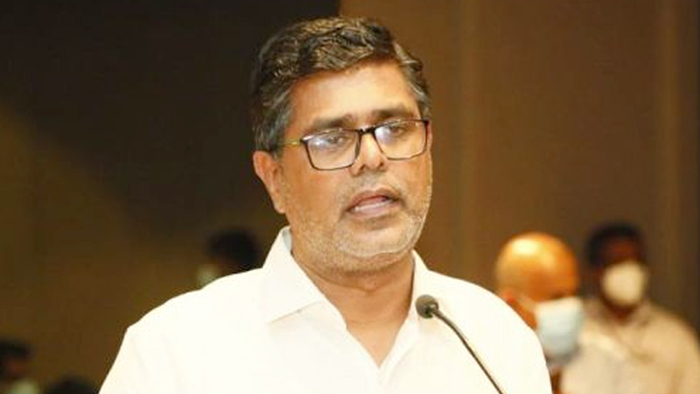
SJB Colombo District MP Mujibur Rahuman in parliament demanded to know from the government the reasons for CEB suspending the leave of all its employees until further notice from Thursday.
MP Rahuman said that the CEB has got an acting General Manager anew and the latter yesterday morning issued a circular suspending leave of all CEB employees with immediate effect until further notice.
“We demand that Minister Kanchana Wijesekera should explain this to the House. This circular was issued while this debate on the new Electricity Amendment Bill was pending. There are many who oppose this Bill. The Minister must tell parliament the reason for the urge to cancel the leave of CEB employees,” the MP said.However, Speaker Mahinda Yapa Abeywardena prevented Minister Wijesekera responding to the query and said that the matter raised by MP Rahuman was not relevant.
News
CIPM successfully concludes 8th Annual Symposium
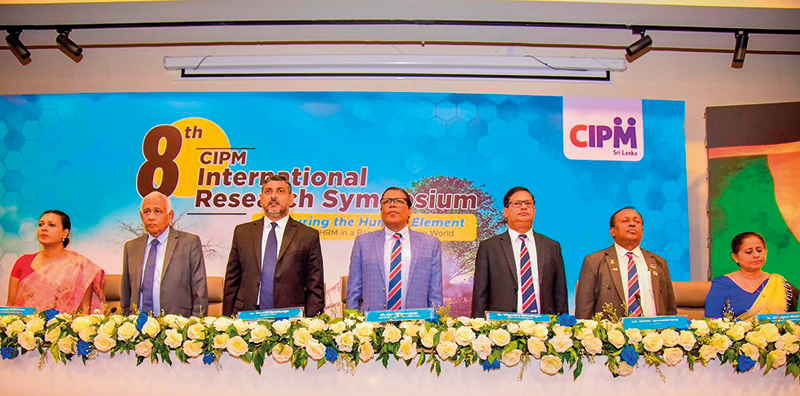
The Chartered Institute of Personnel Management (CIPM) successfully concluded the 8th Annual CIPM Symposium, which took place on 31st May 2024. Themed “Nurturing the Human Element—Redefining HRM in a Rapidly Changing World,” the symposium underscored the pivotal role of human resource management (HRM) in today’s dynamic global landscape. Since its inception in 1959, CIPM has been dedicated to advancing the HR profession through education, professional development, and advocacy, solidifying its position as Sri Lanka’s leading professional body for HRM.
Ken Vijayakumar, the President of the CIPM, graced the occasion as the chief guest. The symposium commenced with the welcome address by the Chairperson, Prof. Arosha Adikaram, followed by the Web Launch of the Symposium Proceedings and Abstract Book by the CIPM President. The event featured distinguished addresses, including a speech by Chief Guest Ken Vijayakumar, President of CIPM, and an address by Guest of Honor Shakthi Ranatunga, Chief Operating Officer of MAS Holdings Pvt. Ltd., Sri Lanka.
The symposium also featured an inspiring keynote address by Prof. Mario Fernando, Professor of Management and Director of the Centre for Cross Cultural Management (CCCM) at the University of Wollongong, Australia.
Vote of Thanks of the inauguration session was delivered by Dr. Dillanjani Weeratunga, Symposium Co-chair.
The symposium served as a comprehensive platform for researchers to present their findings across a wide range of critical topics in HRM. These included Cultural Diversity and Inclusion, Talent Development and Retention, Ethical Leadership and Corporate Social Responsibility, Adapting to Technological Advancements, Mental Health and Well-being at Work, Global Workforce Challenges, Employee Empowerment, and Reskilling and Upskilling.
The plenary session was led by Prof. Wasantha Rajapakse. Certificates were awarded to the best paper presenters during the valedictory session, followed by a vote of thanks delivered by Kamani Perera, Manager of Research and Development.
The annual symposium of CIPM was a truly inclusive event, attracting a diverse audience that spanned undergraduates, graduates, working professionals, research scholars and lecturers. This widespread interest highlights the symposium’s significance in the field of HRM, offering a unique opportunity for everyone to network and learn from scholarly brains.The CIPM International Research Symposium was sponsored by Hambantota International Port, Sri Lanka Institute of Information Technology (SLIIT), E B Creasy & Co. PLC, and Print Xcel Company.



